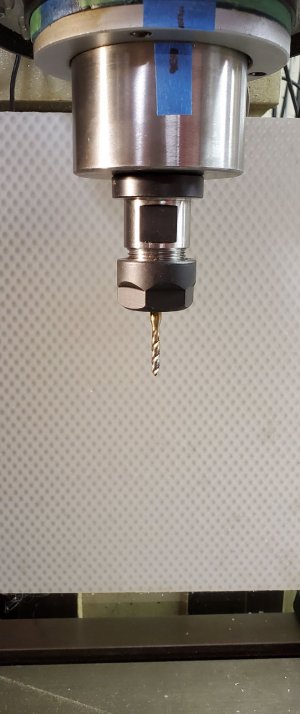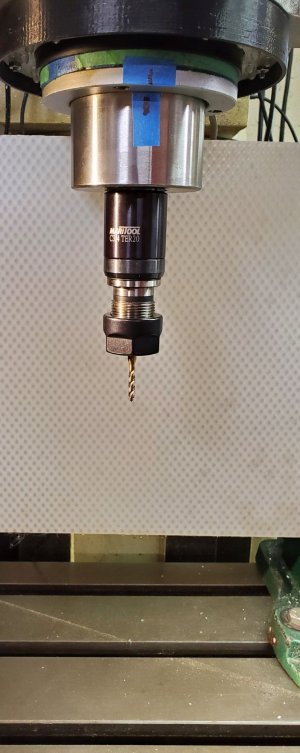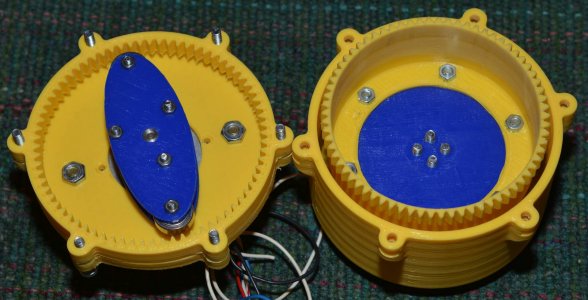Perfect fit. Turns smoothly.
Slight ticking sound. Here's why:
This is the bottom of the cup.

And here's a close-up:

It's clear that the bonding between filaments is pretty crappy. I don't know how much of that is my printer. How much is the parameters for slicing into G-Code. Anyway the ticking I get here is the crack opening/closing between a couple of the strands where there is a crack. This is supposed to be 1mm thick. Any more and it's really stiff.
Better to use PETG or perhaps Nylon but at the moment I can't actually print those. In the long run I want to make the cup from steel with my M0.5 gear cutters. Special tool to spin the cutter inside the cup will be required.
So many projects...
Slight ticking sound. Here's why:
This is the bottom of the cup.
And here's a close-up:
It's clear that the bonding between filaments is pretty crappy. I don't know how much of that is my printer. How much is the parameters for slicing into G-Code. Anyway the ticking I get here is the crack opening/closing between a couple of the strands where there is a crack. This is supposed to be 1mm thick. Any more and it's really stiff.
Better to use PETG or perhaps Nylon but at the moment I can't actually print those. In the long run I want to make the cup from steel with my M0.5 gear cutters. Special tool to spin the cutter inside the cup will be required.
So many projects...
Last edited:




